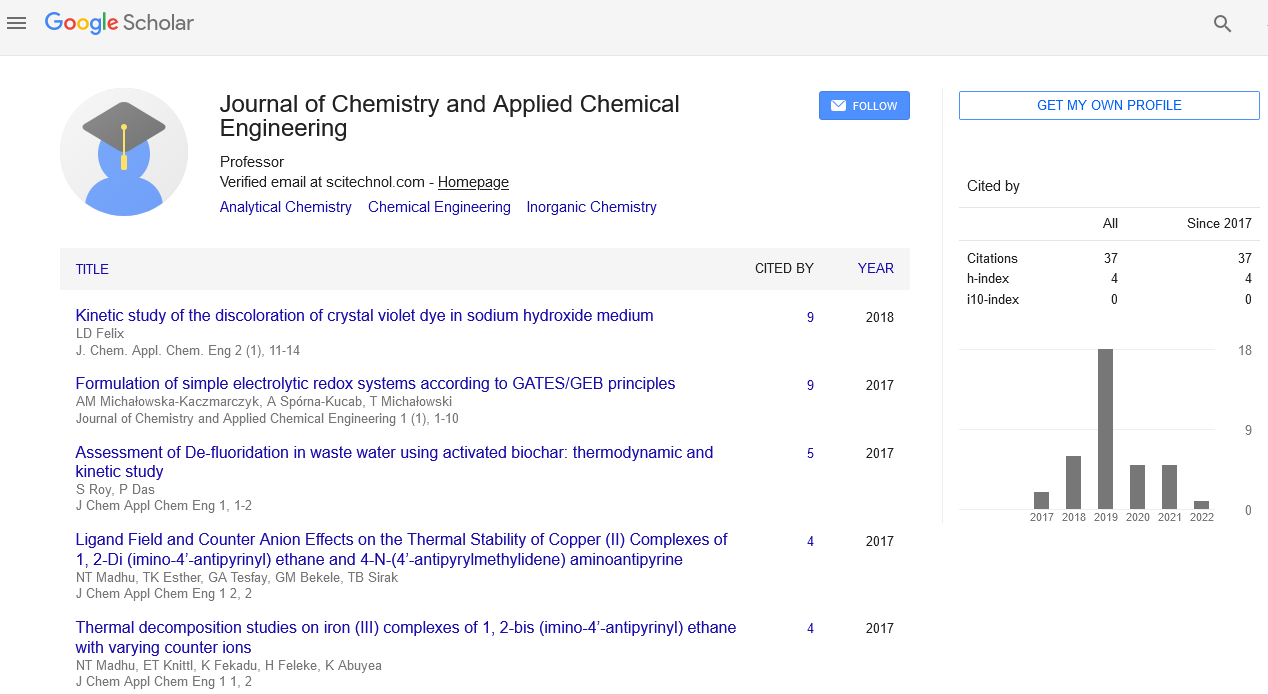On the structure and properties of siliceous materials
Alexander M Korsunsky
University of Oxford, UK
: J Chem Appl Chem Eng
Abstract
Silica structure can be described as a system of SiO4 tetrahedra with central silicon atom surrounded by oxygens at each vertex. In crystalline silica oxygens bridge to neighbouring tetrahedra, while in amorphous silica not all oxygens are bridging, with random arrangement of tetrahedra. Non-bridging atoms allow rotation of tetrahedra over 120–180°, resulting in absence of long range order, and localised deformation through bond rotation. Strain is crucial for evaluating and predicting the mechanical response, strength, and fracture. Using experimental pair distribution function (PDF) analysis in combination with Molecular Dynamic (MD) simulations, we highlight the importance of bond angle change vs bond stretching for strain accommodation in amorphous systems. We show that Atomic PDF analysis is a powerful tool which can be combined with MD simulations to provide insight into strain accommodation in amorphous materials. Short range strain accommodation within amorphous silica is dominated by tetrahedral scissoring rather than changes in bond length. The relationships between macro and atomic level strains demonstrate that atomic rearrangement, rather than bond stretching, is the dominating strain accommodation mechanism in siliceous materials up to length scales of approximately 15 Å. We expand the consideration to the broader class of siliceous materials, including crystalline and amorphous forms of silica, blends with other oxides used in dental porcelains, silica gels, and hydrated forms of biogenic silica, used by diatomic algae to build their exoskeletons known as frustules. The wide range of possible applications of siliceous materials is outlined, and possible routes for further development are discussed.
Biography
Alexander M Korsunsky is a world-leader in engineering microscopy of materials for optimisation of design, durability and performance. He leads the MBLEM lab (Multi-Beam Laboratory for Engineering Microscopy) at Oxford, and the Centre for In situ Processing Science (CIPS) at the Research Complex, Harwell. He consults Rolls-Royce plc on matters of residual stress and structural integrity, and is Editor- in-Chief of Materials & Design, a major Elsevier journal (2017 impact factor 4.525).
E-mail: alexander.korsunsky@eng.ox.ac.uk
 Spanish
Spanish  Chinese
Chinese  Russian
Russian  German
German  French
French  Japanese
Japanese  Portuguese
Portuguese  Hindi
Hindi 